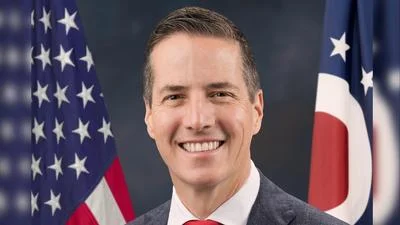Dean Rieck, Executive Director at Buckeye Firearms Association | LinkedIn
Dean Rieck, Executive Director at Buckeye Firearms Association | LinkedIn
It is not surprising to see modern media outlets display their biases. The New York Times recently published a headline, "Supreme Court Ruling on Bump Stocks Could Open Door to More Lethal Weapons," while Bloomberg commented with "Supreme Court's Bump Stock Ruling Reflects Its MAGA Agenda." Notably, the bump stock ban was enacted during President Donald J. Trump's administration.
The U.S. Supreme Court's (SCOTUS) decisions are intended to be based on the Constitution and law rather than political biases. The recent ruling on bump stocks has raised concerns and hopes alike.
The concern lies in how liberal justices approach high-profile cases, prioritizing perceived common sense over statutory text. This case centers more on due process than the Second Amendment. The court's role is defined as the guardian of statutory text and interpreter of the Constitution, ensuring equal justice under law.
Justice Sonia Sotomayor wrote the dissenting opinion in Garland v. Cargill, supported by Justices Elena Kagan and Ketanji Brown Jackson: "Congress’s definition of 'machinegun' encompasses bump stocks just as naturally as M16s... Today's decision to reject that ordinary understanding will have deadly consequences."
Sotomayor focused on Congressional actions related to a 1934 federal law, arguing that it does not matter whether the mechanism is internal or external.
Conversely, Justice Clarence Thomas wrote the majority opinion, supported by Chief Justice John Roberts and Justices Samuel Alito, Amy Coney Barrett, Neil Gorsuch, and Brett Kavanaugh: "A semiautomatic rifle equipped with a bump stock does not fire more than one shot 'by a single function of the trigger.' With or without a bump stock, a shooter must release and reset the trigger between every shot... ATF consistently concluded that rifles equipped with bump stocks cannot 'automatically' fire more than one shot 'by a single function of the trigger.'"
Thomas continued: "In October 2017... A gunman fired on a crowd attending an outdoor music festival in Las Vegas... This tragedy created tremendous political pressure to outlaw bump stocks nationwide... ATF began considering whether to reinterpret §5845(b)’s definition of 'machinegun' to include bump stocks... Senator Dianne Feinstein warned that ATF lacked statutory authority."
This case underscores why elections matter. Although Trump's presidency saw the implementation of the 2018 ATF Final Rule banning bump stocks, it was his SCOTUS appointees who overturned it. Currently, anti-gun leaders in the Senate are urging moderate GOP lawmakers to support new efforts for a bump stock ban.
Joe D. "Buck" Ruth is a longtime small-game hunter and gun owner who spent nearly 30 years in the news industry.






 Alerts Sign-up
Alerts Sign-up